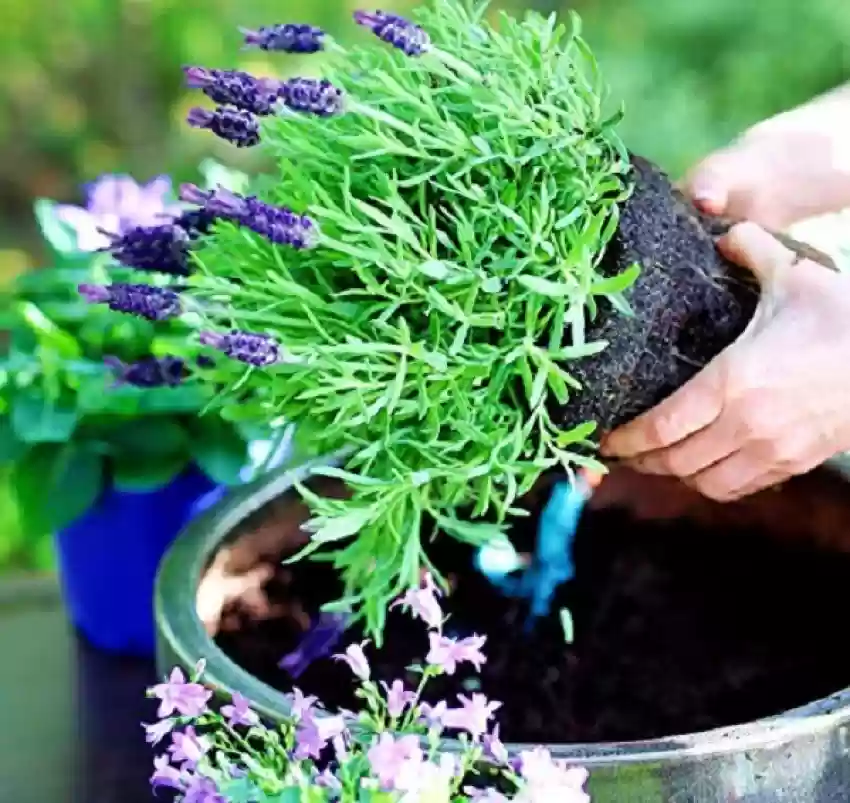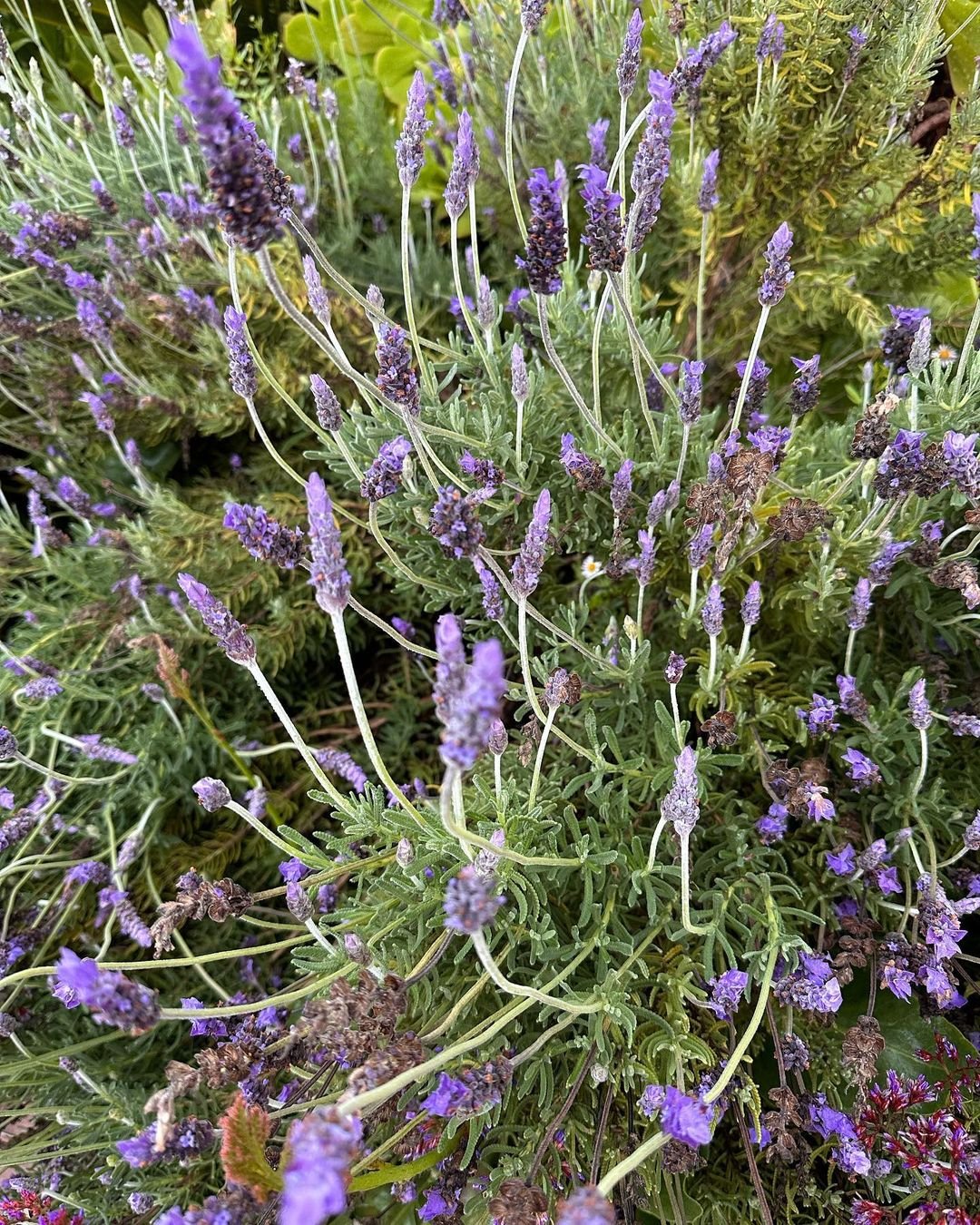Discover the secrets to cultivating the eye-catching Spanish lavender in your garden. This comprehensive guide covers everything from planting to maintaining these unique bunny-eared blooms that add charm to both your outdoor spaces and indoor vases.
Among the diverse array of Lavender varieties, Spanish Lavender (Lavandula stoechas) stands out with its distinctive, bunny-eared blooms. These whimsical flowers, with their vibrant purple bracts resembling elongated ears, add a touch of charm and character to any garden or indoor setting. Beyond their visual appeal, Spanish lavender also boasts a delightful fragrance and low-maintenance nature, making it an ideal choice for gardeners of all skill levels.
In this comprehensive guide, we’ll explore the world of Spanish lavender, covering everything from planting and care to propagation and troubleshooting. Whether you’re a seasoned green thumb or just starting your gardening journey, this guide will equip you with the knowledge and techniques to cultivate these unique, bunny-eared blooms successfully.
Here’s a concise information chart about Spanish lavender:
| Attribute | Information |
|---|---|
| Botanical Name | Lavandula stoechas |
| Plant Type | Perennial flowering plant |
| Zones | 7-10 |
| Exposure | Full sun |
| Bloom Time | Spring to summer |
| Height/Spread | Height: 1-3 feet Spread: 1-2 feet |
About Spanish Lavender

Spanish Lavender, also known as Lavandula stoechas, is a popular ornamental plant valued for its aromatic foliage and colorful flowers.
Spanish lavender (Lavandula stoechas) is a member of the Lamiaceae family and is native to the Mediterranean region, including parts of Spain, Portugal, and France. Unlike its more well-known cousin, English lavender (Lavandula angustifolia), Spanish lavender boasts distinctive, quirky-looking blooms with prominent, elongated bracts that resemble rabbit ears.
While smaller in stature than English lavender, Spanish lavender is a semi-evergreen shrub that typically grows to a height of 2 to 3 feet (0.6 to 0.9 meters) and spreads outward to form a rounded, bushy shape. Its fragrant, gray-green foliage and eye-catching blooms make it a delightful addition to any garden, while its compact size and drought tolerance make it suitable for containers and low-maintenance landscapes.
Planting Spanish Lavender

Timing and Location Spanish lavender thrives in well-drained, sandy, or rocky soil and full sun exposure. When selecting a planting location, choose an area that receives at least six hours of direct sunlight per day. In hot climates, some afternoon shade may be beneficial to prevent the plant from becoming stressed.
The best time to plant Spanish lavender depends on your climate. In most regions, early spring or fall is ideal, as these cooler seasons allow the plant to establish its root system before the heat of summer or the cold of winter sets in.
Soil Preparation Spanish lavender prefers well-drained, slightly alkaline soil with a pH range of 6.5 to 8.0. If your soil is heavy or clay-based, amend it with coarse sand, gravel, or compost to improve drainage and aeration.
Planting from Seeds or Nursery Plants Spanish lavender can be grown from seeds or nursery plants. Sowing seeds directly into the garden is an inexpensive option, but it requires patience, as the seeds can take several weeks to germinate, and the plants may not bloom until the following year.
For a quicker burst of color, consider purchasing nursery-grown plants. When transplanting, dig a hole slightly larger than the plant’s root ball and space the plants 2 to 3 feet (0.6 to 0.9 meters) apart, allowing room for their mature size.
Caring for Spanish Lavender
Watering

Once established, Spanish lavender is drought-tolerant and requires minimal watering. During the first growing season, water the plants deeply about once a week, allowing the soil to dry out slightly between waterings. Established plants can tolerate longer periods of drought, but occasional deep watering during prolonged dry spells will help them thrive.
Fertilizing

Spanish lavender has low nutrient requirements and generally does not need frequent fertilization. If desired, apply a balanced, slow-release fertilizer in early spring, following the manufacturer’s instructions for the appropriate amount and application method.
Pruning

Regular pruning is essential for maintaining the shape and vigor of Spanish lavender plants. After the first flush of blooms has faded, prune back the spent flower stalks to encourage new growth and a second blooming period. In late winter or early spring, before new growth emerges, perform a more extensive pruning, removing any dead or damaged wood and shaping the plant to maintain its compact, rounded form.
Mulching

Applying a 2- to 3-inch layer of organic mulch around the base of Spanish lavender plants can help retain soil moisture, suppress weeds, and regulate soil temperatures. Suitable mulching materials include bark chips, shredded leaves, or gravel.
Winter Care
In most climates, Spanish lavender is hardy and can withstand moderate winter temperatures without protection. However, in regions with harsh winters, it’s a good idea to provide extra insulation by applying a thick layer of mulch around the base of the plants or covering them with a frost blanket during extreme cold snaps.
Propagation

Spanish lavender can be easily propagated through seed sowing, stem cuttings, or division, allowing you to expand your garden or share plants with fellow gardeners.
Seed Sowing
Collect seeds from existing plants in late summer or fall, and sow them in well-draining seed-starting mix in the spring. Keep the soil moist until the seeds germinate, which can take several weeks.
Stem Cuttings
In early spring or fall, take 4- to 6-inch (10- to 15-cm) stem cuttings from new growth, removing the lower leaves. Allow the cut ends to callus over for a few days before planting them in a well-draining potting mix. Keep the cuttings moist and provide humidity until roots develop.
Division
In early spring or fall, carefully dig up established Spanish lavender plants and separate the root systems into smaller sections. Replant the divisions at the same depth as the parent plant, ensuring they have enough space to grow.
Potential Issues and Solutions

While Spanish lavender is generally a low-maintenance plant, it can occasionally face a few challenges. Here are some common issues and their solutions:
Pests and Diseases
Spanish lavender is relatively resistant to pests and diseases, but it can be susceptible to problems like root rot, leaf spot, and spider mites. Proper planting, watering, and pruning practices can help prevent these issues. If an issue arises, treat it promptly with an appropriate organic or chemical treatment.
Leggy Growth
If Spanish lavender plants receive too much shade or are overcrowded, they may become leggy and sparse. Ensure they receive adequate sunlight and thin out overcrowded plants to promote bushier, healthier growth.
Winter Damage
In regions with harsh winters, Spanish lavender may suffer from cold damage or die back to the ground. In these cases, prune away any dead or damaged growth in early spring and wait for new growth to emerge from the base of the plant.
Conclusion
Spanish lavender is a delightful addition to any garden, offering unique, bunny-eared blooms and a delightful fragrance. With its low-maintenance nature and drought tolerance, it’s an excellent choice for gardeners seeking a charming yet easy-care plant.
By following the planting and care guidelines outlined in this guide, you can enjoy a vibrant display of Spanish lavender blooms, adding charm and character to your outdoor spaces and indoor vases alike. Whether you’re creating a Mediterranean-inspired garden, incorporating drought-tolerant plants, or simply seeking a touch of whimsy, Spanish lavender is sure to capture your heart with its quirky beauty and resilient spirit.
Pingback: Spanish Lavender Care: Guide to Unique Bunny-Ea...
Pingback: Plants That Repel Mosquitoes: How to Keep Your Garden and Home Bug-Free
Pingback: Beauty of Plants with Clusters of Tiny White Flowers
Pingback: 13 Purple Orchids Varieties For Your Gardens
Pingback: The Ultimate Guide to Growing Carnations: A Fragrant Delight for Your Garden
Pingback: Umbrella Tree: A Comprehensive Guide to Cultivation -
Pingback: Foxgloves: The Complete Guide to Growing and Caring
Pingback: Prickly Pear Cactus (Opuntia): Comprehensive Guide to Caring
Pingback: Discover 18 Stunning Russian Flowers: A Visual Delight -
Pingback: 20 Types of Yucca Plants (With Pictures) -
Pingback: 10 Mesmerizing Pink Succulents You Need in Your Collection!
Pingback: Foxtail Fern: A Complete Guide to Growing and Caring
Pingback: Strelitzia Nicolai: The Ultimate Guide to the Giant White Bird of Paradise
Pingback: Fritillaria: Plant and Maintenance Tips for a Vibrant Garden
Pingback: Why Black Velvet Alocasia is the Perfect Houseplant
Pingback: Best 25 Companion Plants for Roses - Gardener's School
Pingback: A Complete List of Fruits That Begin with “A”
Pingback: Freesia Care Guide : From Planting to Blooming
Pingback: Welcoming Front Gardens : Creative Design Inspirations
Pingback: The Sleep Oasis : 5 Bedroom Plants for Better Sleep
Pingback: Everlasting Daisies : The Essential Guide to Growing & Caring
Pingback: Nature’s Beauty : Trees That Start with D
Pingback: Cranesbill (Hardy Geranium) Care : The Definitive Handbook - Gardener's School